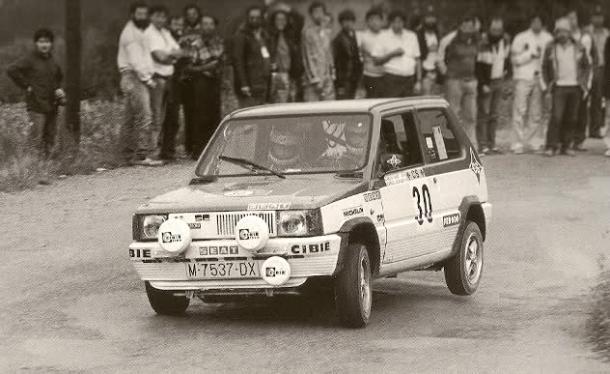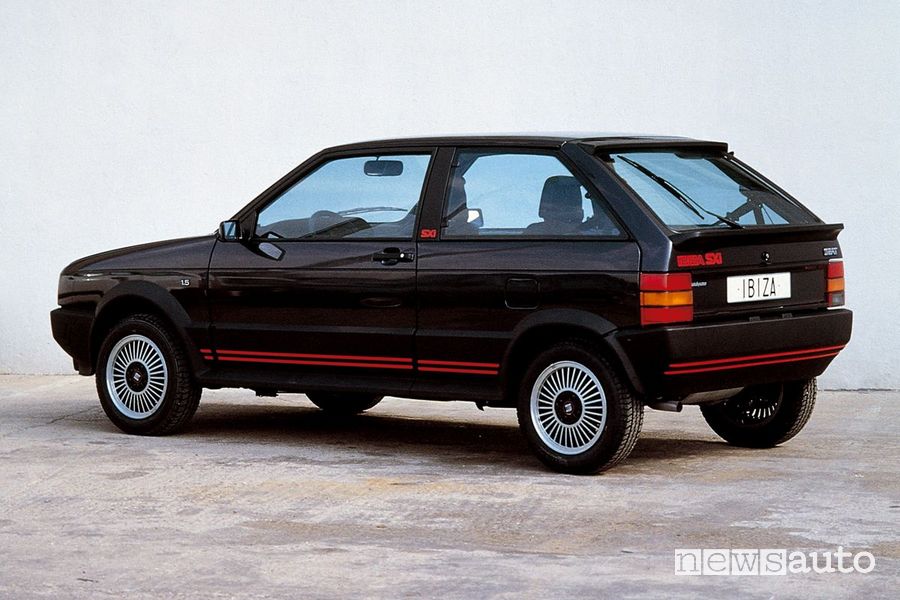70 years of SEAT told in 7 cars
Spain's flag carrier has been overlooked, underappreciated and essential - all in one lifetime

Interesting firm, Seat. Or SEAT, as it prefers. Part national giant, part subsidiary, part basket case. Seen from the UK, it is a familiar recipe for a volume manufacturer. Yet Spain does not possess the thriving backdrop of smaller prestige brands to ensure its position as a global player. In international terms, Seat stands alone as the country's champion. Its ownership status notwithstanding, that's what it was always intended to be. Unlike most carmakers, which were founded by enterprising individuals as private entities, Seat owes its very existence to the state. It was established in 1950 as part of an economic stimulus plan aimed at rapidly modernising Spain's decrepit industrial base. Its majority shareholder was the Instituto Nacional de Industria, a holding company for the Francoist government; the other investors were banks - and Fiat, enlisted for its technical expertise and permission to reproduce its lineup under licence. It took three years to construct Seat's first factory at Barcelona Zona Franca. Then it began.

SEAT 1400
The first car to roll down the Seat production line was the Seat 1400, a rebranded Fiat 1400. It was no Italian relic, either: the 1400 was Fiat's first all-new post-war model and its first attempt at unibody construction. Unsurprisingly, it arrived at the plant in the kit form and was reassembled by Seat's original 925 employees. In retrospect the initial victory was less the car itself, but the swiftness with which a domestic supply chain was created; by 1954, Spanish-made components were said to account for 93 per cent of the 1400's content. By 1956, 10,000 examples were produced annually. A fine start, certainly - but the 1400 was a four-door sedan and by no means cheap. What Spain desperately needed was a way to mobilise the masses. Thankfully, it had picked the right partner.

SEAT 600
Now we're talking. The Seat 600 arrived in 1957, and provided the country with the modestly priced automobile it required. While the Fiat 600 was ultimately overshadowed in Italy by the newer, smaller, cuter Nuova 500 which followed it to market two years later, in Spain the model became an icon of the 'Spanish miracle' - an unprecedented 15 years of growth that saw the nation's economy become the ninth largest in the world. The 600 was not complicated: it was a rear-drive, rear-engined two-door saloon driven by a 633cc engine. Like its Italian counterpart, simplicity was key to its success, and to all intents and purposes it was responsible for turning Spain into a car driving country. Up to 1973, when it finally ceased production, Seat produced 797,319 examples.

SEAT 1200 Sport
The sheer scale of the 600's success made it a difficult car to replace. The updated Fiat 850 arrived as the Seat 850 in 1966, and was followed to market by the redesigned 133, but neither model outsold their predecessor - despite the latter being made available for export. Landmark status must instead be conferred on the Seat 1200 Sport (better known as the 'Bocanegra' or 'Black mouth'), not because it sold in remarkable numbers but because it was the first car developed by the manufacturer in-house. Better yet, it was a four-seat coupe - albeit with a transverse mounted engine driving the front axle. Best of all, after twenty years Seat's sporting ambitions finally came to the fore. In 1977, it produced the 102mph 1430 Sport Coupe and took it rallying.

SEAT Ibiza Mk1
The eighties brought with it significant upheaval, most notably the dissolution of Seat's near 30-year relationship with Fiat. Predictably, the argument centred on money; Turin being unwilling to invest heavily in its Spanish partner. As it tends to, divorce triggered two things: a makeover, in the form of a logo change, and a court case, pertaining to the familiar styling of the new Seat Ronda. Seat won that case, although it was the hatchback's successor which really left its mark. The first-generation Ibiza was technically similar to the Ronda, but it was the Italdesign styling and Porsche's assistance in powertrain development that helped cement its legend. Introduced in 1984 while Seat was still an independent company, and responsible for 1.3m sales, it helped seal the manufacturer's international reputation.

SEAT Toledo Mk1
Seat had signed a co-operation agreement with Volkswagen in 1982 (Giugiaro's Ibiza design was initially rejected as the new-look Golf), with a deeper partnership confirmed a year later. But the VW Group's aspirations were truly global and by 1986 it had become Seat's major stakeholder. In 1990, it swallowed the brand whole. Life as a subsidiary began with the Toledo, the first model developed entirely under Volkswagen's ownership. Introduced in 1991, the five-door liftback was a definitive sign of what was to come: built on a VW platform and powered by VW engines, but differentiated just enough in look and feel and size and bottom line for buyers to be able to distinguish it from the equivalent Volkswagen. There was even a GTI.

SEAT Leon
Truthfully, though Seat built the Toledo for nearly a full decade, it was arguably not the car needed. Much like the 600 three decades previously, the manufacturer required a volume seller for the masses - and in Europe in the nineties that meant a C-segment hatchback. The Leon finally arrived in 1998, based, rather inevitably, on the VW Golf. It has spawned four generations (including one launched just this year) and is firmly established as the bedrock on which the rest of Seat rests. And while the Cupra performance brand was officially launched elsewhere, it was in Leon costume that it found its rightful home and generated a loyal following. In the Mk1 alone it got through four distinct derivatives, including an all-wheel drive VR6-powered variant which never made it to the UK.

SEAT/CUPRA Ateca
Until very recently, the Leon was left to sustain the Cupra badge alone. Seat was disinclined to attach it to a new generation of Ibiza after Volkswagen took the Polo rallying, and appeared to have lost interest in the wider appeal of the brand. Or so it seemed. Then, rather suddenly, it upended the Kool-Aid bottle. In 2018, it announced that Cupra would become a standalone brand in its own right. Then it doubled down on that slightly eccentric idea by making its first production model an SUV - a variant of Seat's first ever SUV, the Ateca. It seemed like overreach and we all tittered at the new badge; but in curious times it made a curious amount of sense. The Cupra Ateca was fast and comfy and good looking enough - and critically, it was first to market, an advantage Seat has rarely enjoyed. This year we'll get the new Cupra Leon and the Cupra Formentor, the standalone brand's first standalone car. Not bad for a basket case.
My nephew bought an Ibiza an Ibiza a few years later, similar year to my Leon, despite me advising him not to. He had a similar experience to mine. Seat from that era are hit and miss when it comes to build quality.
To me they're just a poor man's VW.
The original Leon was a nice sporty looking car compare to a Mk4 Golf or Octavia.
I think its perhaps a bit to far to put on a level with something like Alfa Romeo but I do see why youd go for a Seat over other VAG for a bit of pizzazz and sportiness.
The 184 DSG mk3, fully loaded, 33k miles and it was £12k, the equivalent golf GTD with the same engine and spec was closer to £21k, a A3 even more
I also think it was the nicest looking car, and the interior while plain was nice, although you can see where they cut costs like the Leon had a manual handbrake where the golf and A3 have electric, the Leon also didn’t have any matts in the door bins so stuff slid around in themx
I loved that car and would have another, it was the first hatchback to get full LEd headlights, and mine had a pano and seat sound
My sister now has a 1.5tsi Ibiza and it’s a very good warm hatch, 150bhp and I don’t think they ever put the engine in a polo.


The Skoda had a better quality interior & seats with a few nice touches - decent hooks for shopping bags in boot, sun-glasses compartment in roof, storage compartment on top of dash, etc.
Leon has more tech but it is 6 years newer so should have. LED headlamps, and all other lights also LED, as standard.
I wanted a Golf, for no other reason than it being the default go-to car in it's class, but for what I wanted to spend I couldn't get a car with the engine and spec I wanted unless it was much older than I preferred. The Leon provided the necessary tech and, coming from a more expensive company car, the LEDs were a bonus when I picked the car up in the middle of winter. The interior is cheaper but the outside in my opinion was the best looking car in its class.
SEAT took 3% of the new car market in 2019, much the same as Skoda and in the same ball-park as Peugeot, Citroen or Renault so the cars clearly have a broad appeal. That appeal will be down to the strength of the product and the value for money rather than any emotional attachment to the badge - and all the better for it.
The 184 DSG mk3, fully loaded, 33k miles and it was £12k, the equivalent golf GTD with the same engine and spec was closer to £21k, a A3 even more
Looked at Polo for daughter some years ago - listed at £11K and had no a/c and cassette player. Ibiza had a/c and CD player and was £7500.
Couple of cars inbetween and she's now in a SEAT Ateca - under £20K new for one with LED headlights, leather etc etc.
I will say, based on our experience of two, the dealers are absolutely rubbish. It comes up on SEAT forums too. They make VW dealers look OK.

It looked the part and was a cut above performance, size and reliability wise compared to what my 20-something buddies were driving around in at the time. There was no hiding the FIAT Ritmo/Strada underpinnings though which wasn't necessarily a bad thing as performance parts were easy to get hold of, plus lower and stiffening the rear suspension was just a matter of using rubber mountings sourced from various different FIAT cars.
Second one was a Mk1 Toledo GTi, same colour as the facelift model pictured in the article (an SE) but with front foglights instead of blanking covers and 15" alloy wheels. Basically a bigger, more practical Mk2 Golf GTI. Amazing load capacity - managed to fit a wardrobe in it. Did several trans-europe trips without missing a beat in decent comfort, one time carrying a complete home air-conditioning unit in the back as well as luggage for four people.
A brand that deserves a bit more respect IMO, but that ain't going to happen while it lives in the shadow of the badge snobs' current favourites.

Best forgotten IMO. An inferior clone of the FIAT Panda that was the unintentional victim of the divorce. Seriously underdeveloped and not a patch on the original as it was left in limbo.
Gassing Station | General Gassing | Top of Page | What's New | My Stuff



